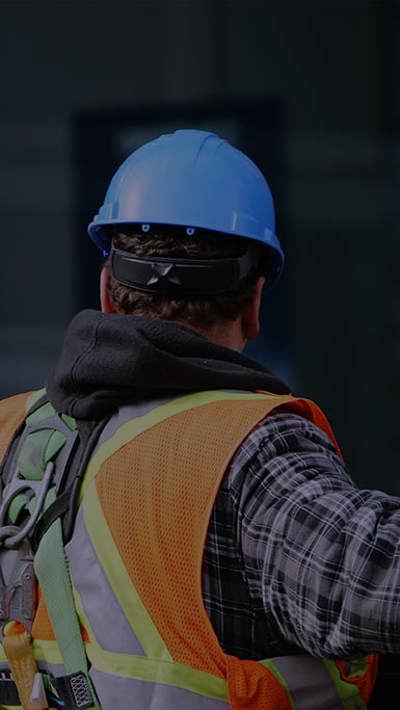Speak to our experts
Contents
Indications are that we will move from Level 4 to Level 3 on or about 22 April. The objective of Level 3 is to allow more economic activity without jeopardising the gains made in Level 4.
The Prime Minister (PM) is promising some guidance as to what Levels 3 and 2 may look like on Thursday. She has indicated that this will be in the form of principles and examples and has asked businesses to be thinking now about how they might safely transition out of Level 4. This will differ from sector to sector and industry to industry. For industries involving close physical engagement with the public (e.g. personal services) Level 3 may look very like Level 4.
It is vastly more complex to move out of lockdown than to move into it and there is a huge amount of work going into this right now, both here and overseas. An article by Rod Oram, Options for a slow road back, gives a sense of what is happening internationally, and in New Zealand there are, according to some reports, as many as 80 working groups beavering away on the transition – mostly behind the scenes.
These include a public sector/private sector collaboration under the Construction Sector Accord which has identified health and safety as a key issue and is developing a set of standards and protocols to cover how businesses and employees might return to work safely.
They capture the objectives at Level 3 as:
- physical distancing
- hygiene, and
- tracking.
Dr Ashley Bloomfield has said that, while more people will be allowed back to work in Level 3, workplaces will have to maintain “strict physical separation and hand hygiene”. He is presenting these as the new baseline, indicating that they will remain in place for many months.
For businesses, that may mean working differently, engaging differently with your clients and contractors, and delivering your product differently. The PM gave the example of restaurants staying closed but doing deliveries. In other words, back to business but not back to business as usual.
Factors to guide your planning
We expect that firms will be encouraged to continue having as many employees as possible working from home, where that can be done at little cost or inconvenience to the business.
Contact tracing and testing will be important elements of the Government’s Level 3 response so you should be thinking about what you could do on-site to assist the health authorities with these tasks. If you allow non-employees into your workplace, you should consider getting them to sign in and leave contact details.
We don’t know the answers. They will be different for each business. To help you to track a safe path back to work, we have prepared a table below setting out some of the issues you may need to think about and situations you may need to address.
| Feature of your business | What to work through |
| Changing how you do things |
We know businesses will be asked to operate differently but we don’t yet know exactly how. It’s possible that changes to the lockdown will be sequential, with a continuing emphasis on working from home where possible. As restrictions lift what you can anticipate is a strong emphasis on:
|
| Safety |
You continue to remain responsible for the health and safety of your workforce and those who interact with your business. This includes the risk posed to individuals by COVID-19. It will be critical to ensure that any changes to usual practices and procedures to accommodate the risk of COVID-19 do not create new safety risks. A robust risk assessment process will be critical to ensure you are best placed to meet your health and safety responsibilities. |
| Your staff |
If you are planning a return to the workplace for at least some positions, think about how you will deal with employees who are concerned about the possible health risk – even when you have changed the way you do things – and don’t want to return. And prepare for the reverse. If you want to continue in working from home mode, think about how you will respond to staff who are finding it testing at home or in their flat and want to move back to the workplace. Consider what it will mean for individual staff members if school children are unable to return to school. Can you find work arrangements which can accommodate their child care needs? Think ahead to any interaction with the changes you have implemented to pay, hours or duties and also the wage subsidy scheme when making changes to activity levels. Remember that any alterations to terms of employment will require consultation, and in some cases, agreement, so factor that into your planning. |
| Your premises |
If you’ve reached an accommodation on your lease arrangements while out of your premises, front foot a discussion about any changes which see you making some (but potentially not full) use of the premises at Level 3. |
| Your service |
It likely won’t be what it was. It will potentially be slower and more costly to do. Be thinking about what that means for your key supply contracts, your statements in the market about service levels, your brand. |
| Your customers |
When we come out of lockdown, you will be discovering what your customers want (it may be different) and whether they are surviving at all. Communicate early if you are planning to ramp back up your level of activity. |
| Your suppliers |
Same for suppliers. Don’t assume they can provide the same service, or are surviving well. If you are changing how you are doing things, you will also be drawing upon new resources and services. Will you be making greater use of couriers or other delivery services? IT platforms? So will a number of other businesses. You can be thinking now about what securing those relationships looks like. Attempt to identify those suppliers which are key to success under a Level 3 world and beyond (e.g. if we flex our business model to do x, will we need y) and find ways to secure that critical supply. |
| Regional variations |
The Government has signalled that it is prepared to have different levels of restrictions in different parts of the country. So you may have the opportunity to choose whether all of the questions above flex for that. If you go with regional variations in how you operate, it will require clear communications with employees, customers, the market generally, suppliers. Have those stress tested. |
| Looking beyond the move to Level 3 |
This will be the beginning of the beginning. Once you’ve stabilised at Level 3, the shape of a medium term plan might be easier to envisage. This can include engaging lenders and shareholders on how the structure of your debt and capital supports your medium term plan. Finally, a return to Level 4 cannot be ruled out, depending on how the epidemic progresses from here. So review how your business plan for the lockdown performed and whether there are any lessons for the future. |
























































